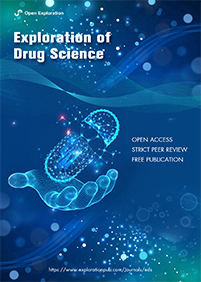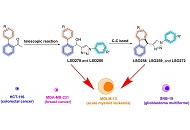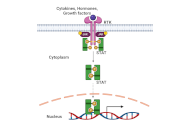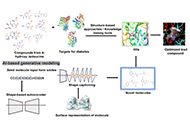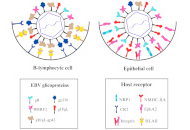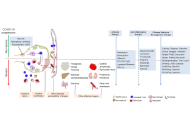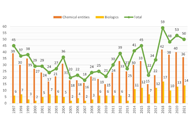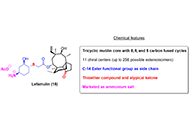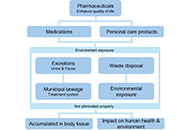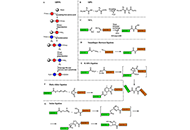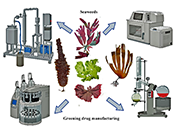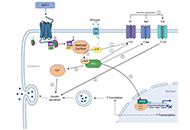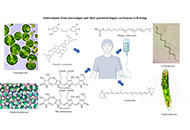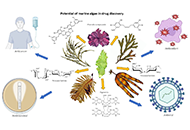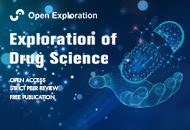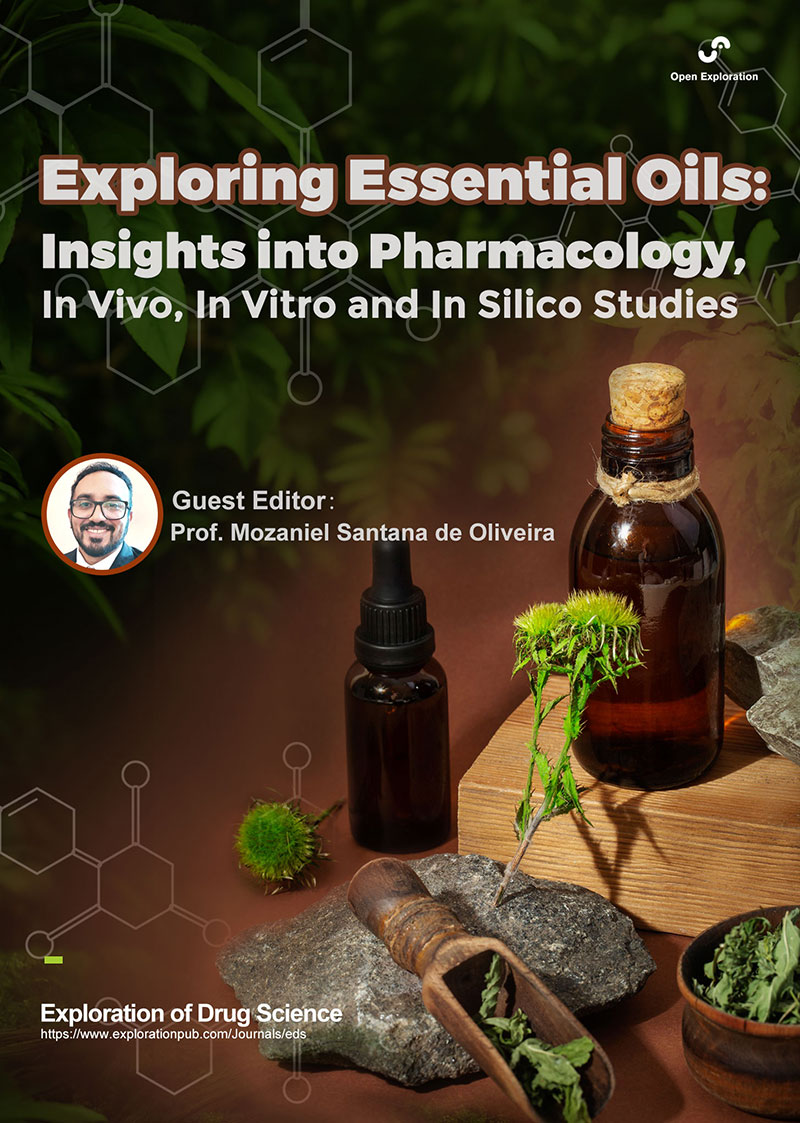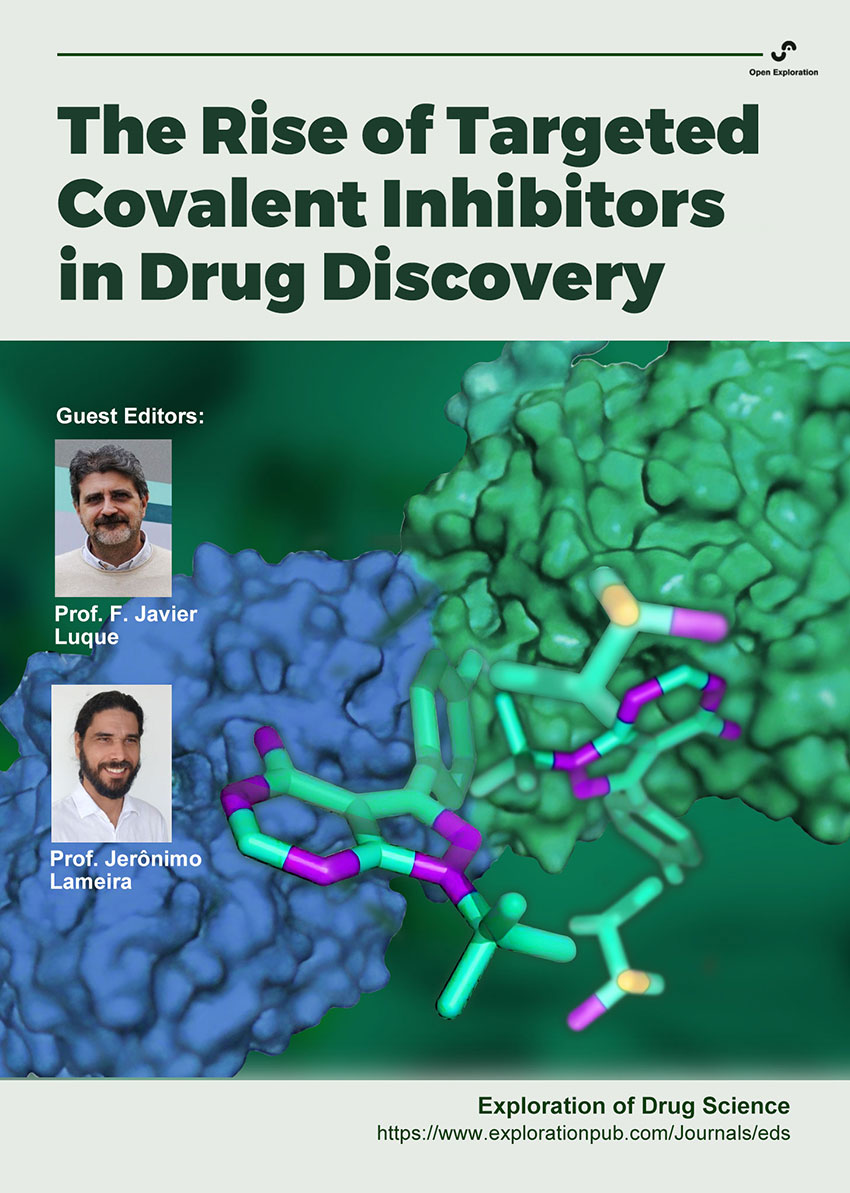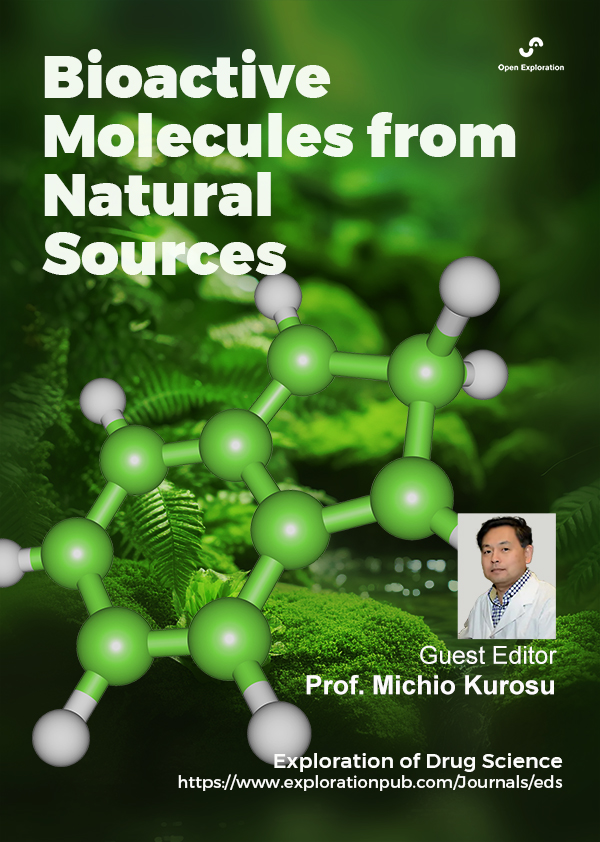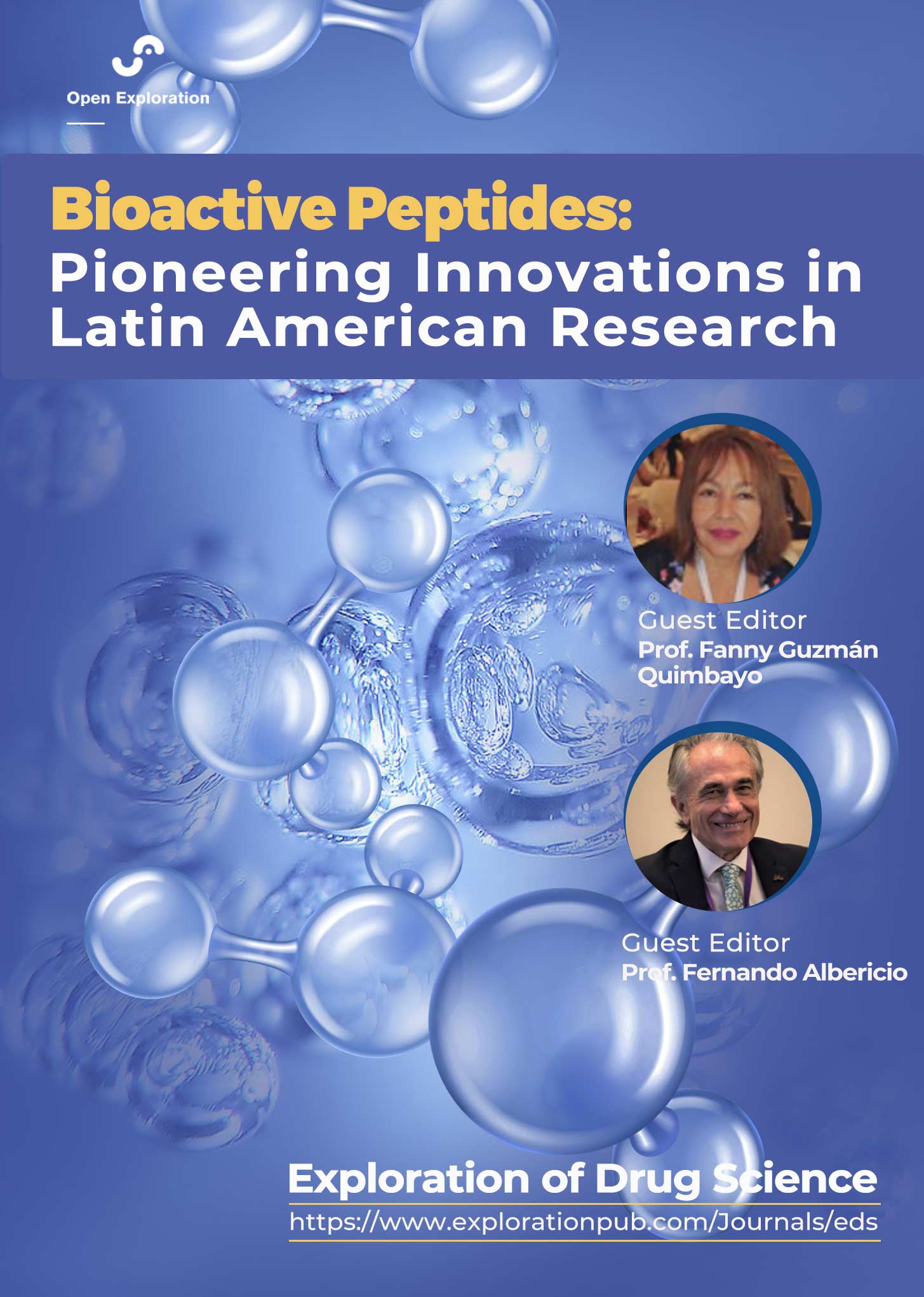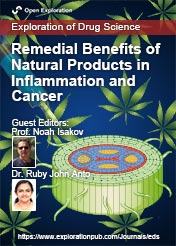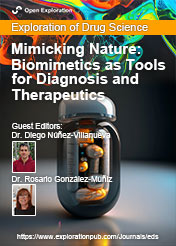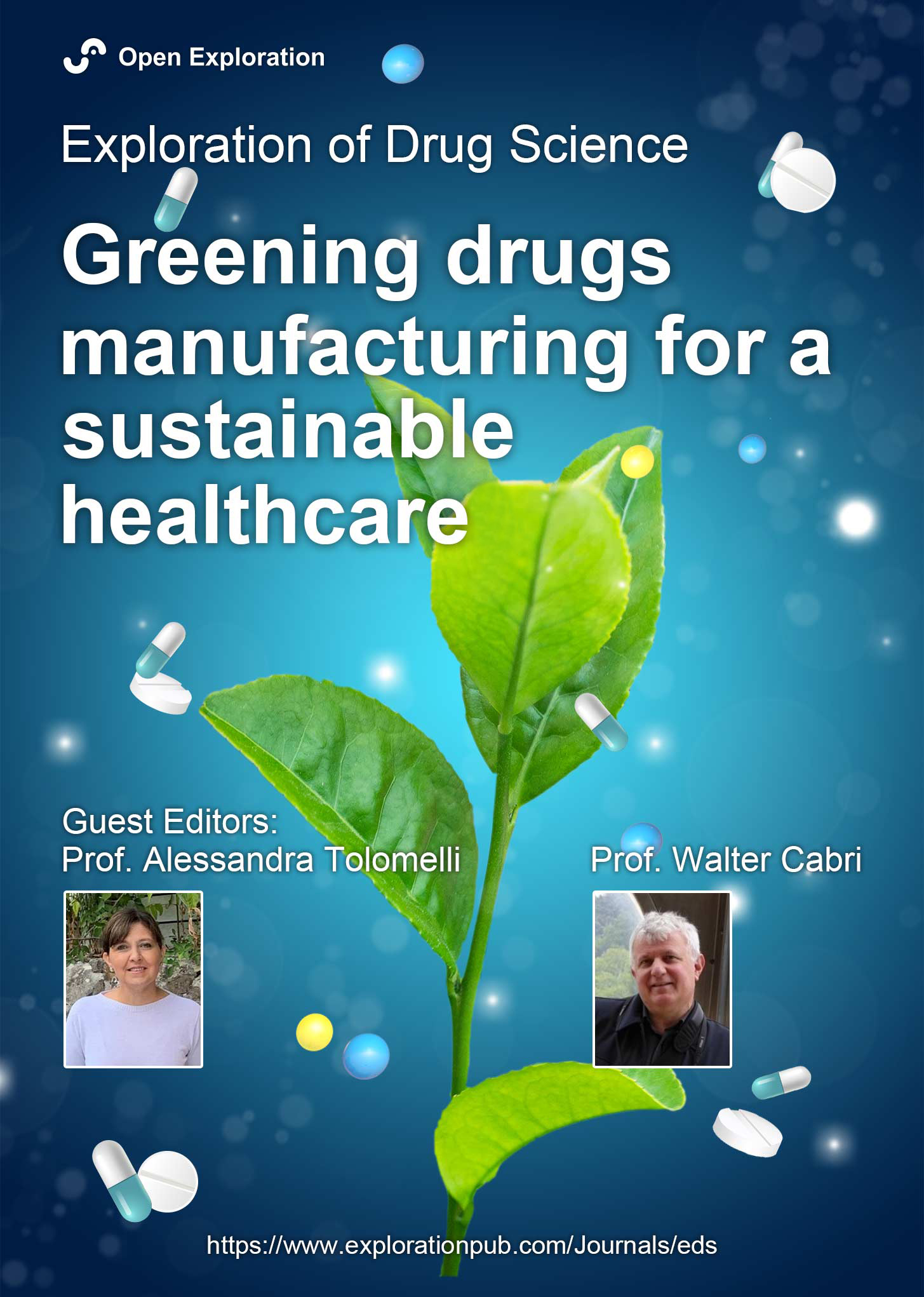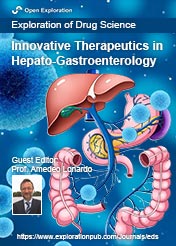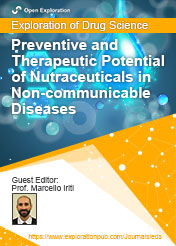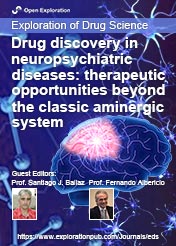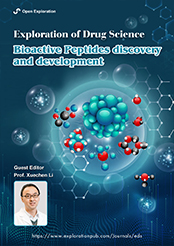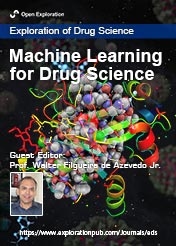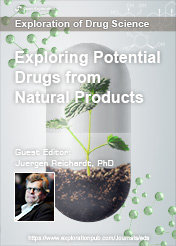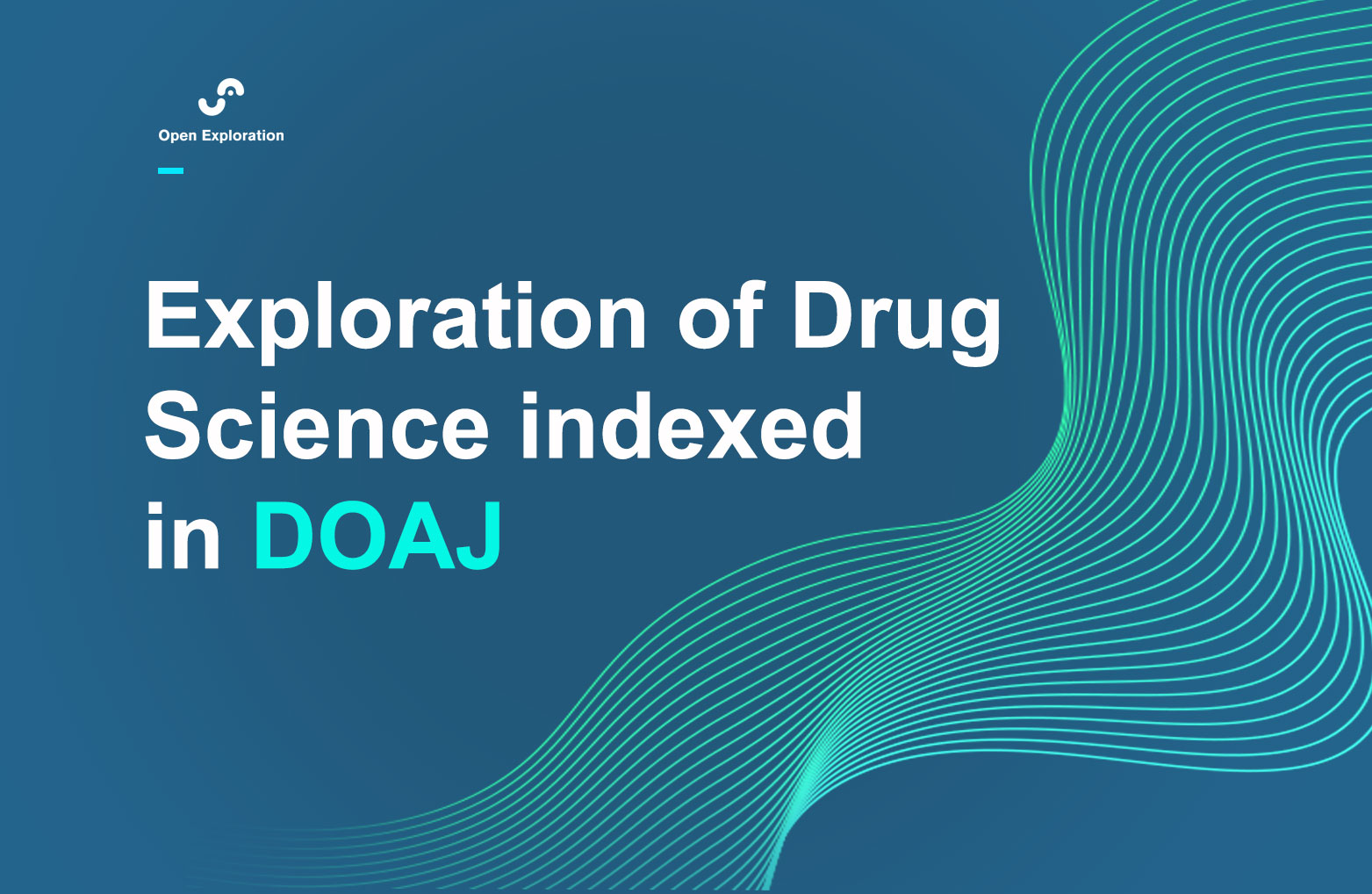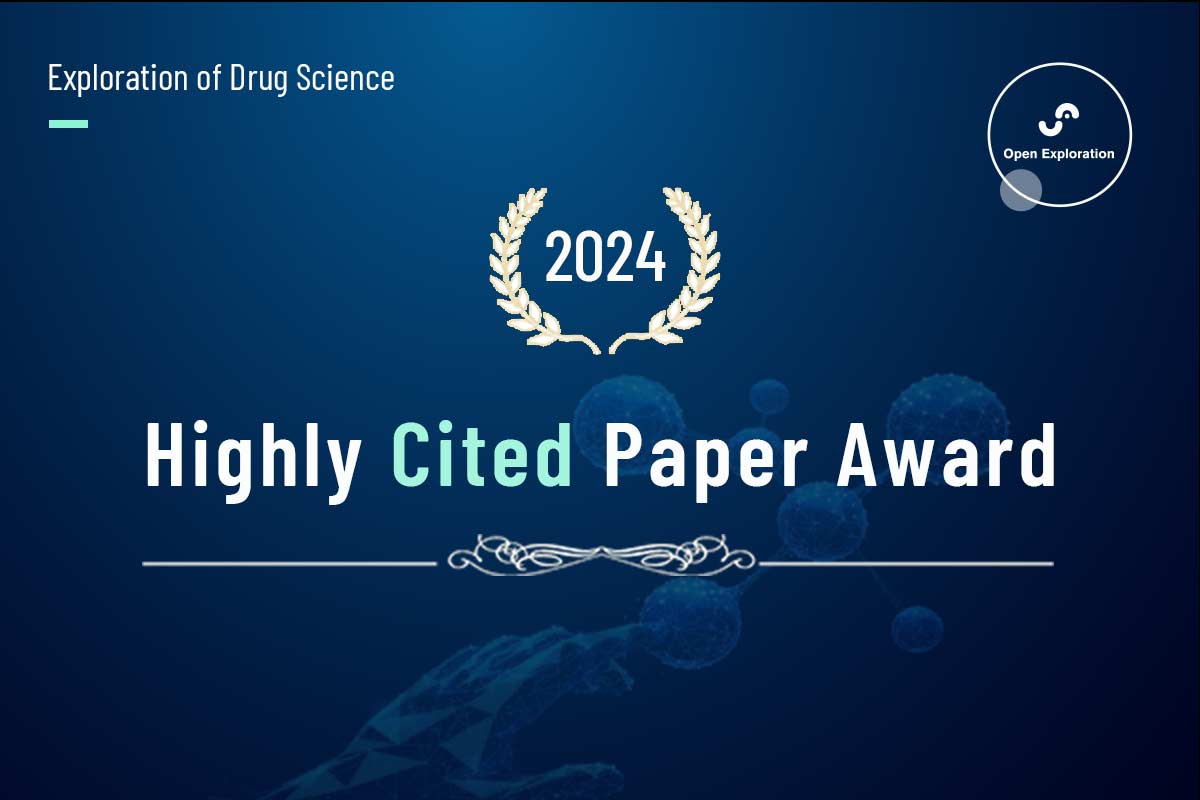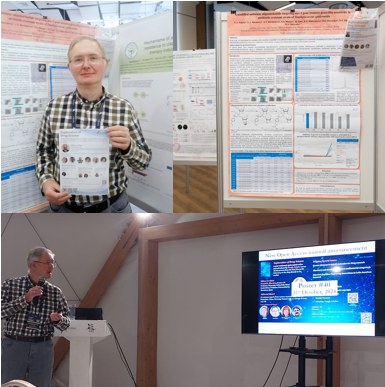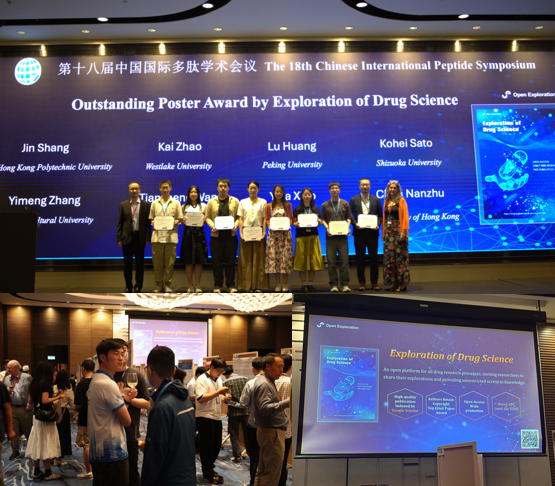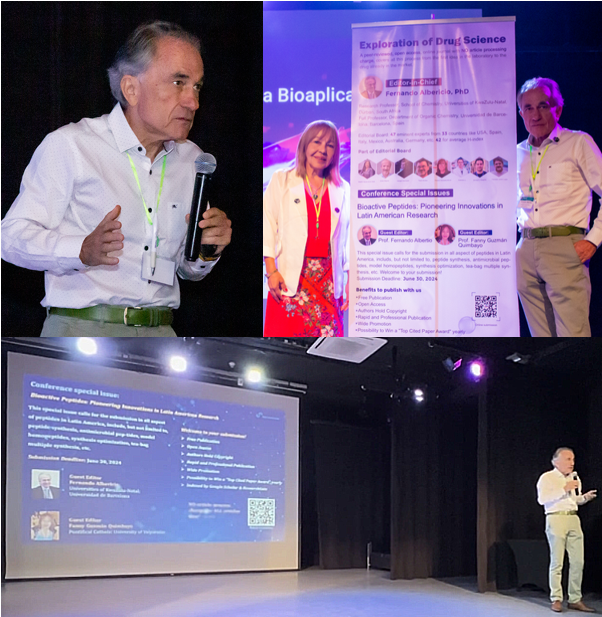-
Exploration of Drug Science
eISSN: 2836-7677EiC: Fernando Albericio, South AfricaFrequency: Continuous PublicationAPC: No Article Processing Charge before January 31, 2028Publishing Model: Open AccessPeer Review Model: Single BlindIndexing & Archiving: DOAJ, Google Scholar, Dimensions, CAS, Portico, etc.Articles Synthesis and antitumoral activity of novel biaryl hydroxy-triazole and fluorene-triazole hybridsOpen AccessOriginal ArticleAim: The development of selective and potent antitumor agents remains a significant challenge. This study aimed to synthesize and evaluate biaryl hydroxy-1,2,3-triazoles and 9H-fluorene-1,2,3-tri [...] Read more.David Chafi Zeitune ... Camilla Djenne BuarquePublished: April 21, 2025 Explor Drug Sci. 2025;3:1008107
Synthesis and antitumoral activity of novel biaryl hydroxy-triazole and fluorene-triazole hybridsOpen AccessOriginal ArticleAim: The development of selective and potent antitumor agents remains a significant challenge. This study aimed to synthesize and evaluate biaryl hydroxy-1,2,3-triazoles and 9H-fluorene-1,2,3-tri [...] Read more.David Chafi Zeitune ... Camilla Djenne BuarquePublished: April 21, 2025 Explor Drug Sci. 2025;3:1008107
DOI: https://doi.org/10.37349/eds.2025.1008107 Natural products targeting cancer stem cells: a promising therapeutic approachOpen AccessReviewCancer remains the second leading cause of death globally, posing an ongoing threat to public health. A hallmark of cancer cells is their capacity to invade adjacent tissues and evolve into malignan [...] Read more.Julia K. Opara ... Shrikant AnantPublished: April 18, 2025 Explor Drug Sci. 2025;3:1008106
Natural products targeting cancer stem cells: a promising therapeutic approachOpen AccessReviewCancer remains the second leading cause of death globally, posing an ongoing threat to public health. A hallmark of cancer cells is their capacity to invade adjacent tissues and evolve into malignan [...] Read more.Julia K. Opara ... Shrikant AnantPublished: April 18, 2025 Explor Drug Sci. 2025;3:1008106
DOI: https://doi.org/10.37349/eds.2025.1008106
This article belongs to the special issue Remedial benefits of natural products in inflammation and cancer A narrative review on the role of gut microbiome, dietary strategies, and supplements in managing metabolic syndromeOpen AccessReviewMetabolic syndrome is a complex, multifactorial disorder, with emerging research emphasizing the significant role of gut health in its prevention and management. Recent studies suggest that dietary [...] Read more.Sunil Chopra ... Ramendra Pati PandeyPublished: April 14, 2025 Explor Drug Sci. 2025;3:1008105
A narrative review on the role of gut microbiome, dietary strategies, and supplements in managing metabolic syndromeOpen AccessReviewMetabolic syndrome is a complex, multifactorial disorder, with emerging research emphasizing the significant role of gut health in its prevention and management. Recent studies suggest that dietary [...] Read more.Sunil Chopra ... Ramendra Pati PandeyPublished: April 14, 2025 Explor Drug Sci. 2025;3:1008105
DOI: https://doi.org/10.37349/eds.2025.1008105
This article belongs to the special issue Preventive and Therapeutic Potential of Nutraceuticals in Non-communicable Diseases Revolutionizing diabetes treatment: computational insights into 4-hydroxy isoleucine derivatives and advanced molecular screening for antidiabetic compoundsOpen AccessOriginal ArticleAim: This study aimed to computationally identify and optimize 4-hydroxy isoleucine (4HILe) derivatives from fenugreek as multitarget antidiabetic agents against α-glucosidase, α-amylase, and a [...] Read more.Lakshmi Mounika Kelam ... M. Elizabeth SobhiaPublished: April 10, 2025 Explor Drug Sci. 2025;3:1008104
Revolutionizing diabetes treatment: computational insights into 4-hydroxy isoleucine derivatives and advanced molecular screening for antidiabetic compoundsOpen AccessOriginal ArticleAim: This study aimed to computationally identify and optimize 4-hydroxy isoleucine (4HILe) derivatives from fenugreek as multitarget antidiabetic agents against α-glucosidase, α-amylase, and a [...] Read more.Lakshmi Mounika Kelam ... M. Elizabeth SobhiaPublished: April 10, 2025 Explor Drug Sci. 2025;3:1008104
DOI: https://doi.org/10.37349/eds.2025.1008104
This article belongs to the special issue Bioactive Molecules from Natural Sources The use of peptides for deciphering the mechanism of EBV, HPV, and HCV invasion of human cellsOpen AccessReviewEpstein-Barr virus (EBV), human papillomavirus (HPV), and hepatitis C virus (HCV) are significant human pathogens associated with various diseases, employing complex molecular mechanisms for cellula [...] Read more.Daniela Perdomo-Joven ... Mauricio Urquiza-MartinezPublished: March 26, 2025 Explor Drug Sci. 2025;3:1008103
The use of peptides for deciphering the mechanism of EBV, HPV, and HCV invasion of human cellsOpen AccessReviewEpstein-Barr virus (EBV), human papillomavirus (HPV), and hepatitis C virus (HCV) are significant human pathogens associated with various diseases, employing complex molecular mechanisms for cellula [...] Read more.Daniela Perdomo-Joven ... Mauricio Urquiza-MartinezPublished: March 26, 2025 Explor Drug Sci. 2025;3:1008103
DOI: https://doi.org/10.37349/eds.2025.1008103
This article belongs to the special issue Bioactive Peptides: Pioneering Innovations in Latin American Research Novel progression on clinical therapy of COVID-19: Western and Traditional Chinese MedicinesOpen AccessReviewSevere acute respiratory syndrome coronavirus 2 (SARS-CoV-2) is a novel coronavirus that causes a global epidemic named COVID-19. It still continues to plague humans with severe complications and un [...] Read more.Yongjia Xiong ... Feiyue XingPublished: March 26, 2025 Explor Drug Sci. 2025;3:1008102
Novel progression on clinical therapy of COVID-19: Western and Traditional Chinese MedicinesOpen AccessReviewSevere acute respiratory syndrome coronavirus 2 (SARS-CoV-2) is a novel coronavirus that causes a global epidemic named COVID-19. It still continues to plague humans with severe complications and un [...] Read more.Yongjia Xiong ... Feiyue XingPublished: March 26, 2025 Explor Drug Sci. 2025;3:1008102
DOI: https://doi.org/10.37349/eds.2025.1008102Special Issues Essential Oils: Insights into Pharmacology, In Vivo, In Vitro and In Silico Studies
Essential Oils: Insights into Pharmacology, In Vivo, In Vitro and In Silico StudiesProf. Mozaniel Santana de Oliveira
Submission Deadline: October 31, 2025
Published Articles: 0
 Drug Repurposing: Accelerating Cancer Therapeutic Discoveries
Drug Repurposing: Accelerating Cancer Therapeutic DiscoveriesProf. Wei-Lin Jin Dr. Jin-Min Ma
Submission Deadline: August 31, 2025
Published Articles: 0
 The Rise of Targeted Covalent Inhibitors in Drug Discovery
The Rise of Targeted Covalent Inhibitors in Drug DiscoveryProf. F. Javier Luque Prof. Jerônimo Lameira
Submission Deadline: September 30, 2025
Published Articles: 0
 Bioactive Molecules from Natural Sources
Bioactive Molecules from Natural SourcesProf. Michio Kurosu
Submission Deadline: August 31, 2025
Published Articles: 1
 Leveraging the FDA-Approved Kinase Inhibitors to Treat Neurological Disorders
Leveraging the FDA-Approved Kinase Inhibitors to Treat Neurological DisordersProf. Dazhi Liu
Submission Deadline: June 30, 2025
Published Articles: 2
 Bioactive Peptides: Pioneering Innovations in Latin American Research
Bioactive Peptides: Pioneering Innovations in Latin American ResearchFanny Guzmán Quimbayo Fernando Albericio
Submission Deadline: June 30, 2025
Published Articles: 9
 Recent advances with investigational compounds and strategies to delay or reverse normal aging processes
Recent advances with investigational compounds and strategies to delay or reverse normal aging processesRicardo P. Garay, MD, PhD
Submission Deadline: April 30, 2025
Published Articles: 2
 Discovery and development of new antibacterial compounds
Discovery and development of new antibacterial compoundsKamal Kumar
Submission Deadline: June 30, 2025
Published Articles: 3
 Remedial benefits of natural products in inflammation and cancer
Remedial benefits of natural products in inflammation and cancerNoah Isakov Ruby John Anto
Submission Deadline: June 30, 2025
Published Articles: 6
 Mimicking Nature: Biomimetics as Tools for Diagnosis and Therapeutics
Mimicking Nature: Biomimetics as Tools for Diagnosis and TherapeuticsDiego Núñez-Villanueva Rosario González-Muñiz
Submission Deadline: June 30, 2025
Published Articles: 3
 Greening Drug Manufacturing for a Sustainable Healthcare
Greening Drug Manufacturing for a Sustainable HealthcareProf. Alessandra Tolomelli Prof. Walter Cabri
Submission Deadline: June 30, 2025
Published Articles: 3
 Innovative Therapeutics in Hepato-Gastroenterology
Innovative Therapeutics in Hepato-GastroenterologyProf. Amedeo Lonardo
Submission Deadline: June 30, 2025
Published Articles: 4
 Preventive and Therapeutic Potential of Nutraceuticals in Non-communicable Diseases
Preventive and Therapeutic Potential of Nutraceuticals in Non-communicable DiseasesProf. Marcello Iriti
Submission Deadline: June 30, 2025
Published Articles: 2
 Drug Discovery in Neuropsychiatric Diseases: therapeutic opportunities beyond the classic aminergic system
Drug Discovery in Neuropsychiatric Diseases: therapeutic opportunities beyond the classic aminergic systemProf. Santiago J. Ballaz Prof. Fernando Albericio
Submission Deadline: June 30, 2025
Published Articles: 0
 Bioactive Peptides discovery and development
Bioactive Peptides discovery and developmentProf. Xuechen Li
Submission Deadline: November 30, 2024
Published Articles: 10
 Machine Learning for Drug Science
Machine Learning for Drug ScienceProf. Walter Filgueira de Azevedo Jr.
Submission Deadline: May 31, 2025
Published Articles: 5
 Emerging Nanomedicine Technologies for Enhanced Cancer Theranostics
Emerging Nanomedicine Technologies for Enhanced Cancer TheranosticsProf. Xiangyang Shi
Submission Deadline: June 30, 2025
Published Articles: 4
From the Editor-in-Chief The journey from the idea in the laboratory to the drug on the market is possibly the most exciting scientific process and, at the same time, the one with the most significant impact from both social and economic point of view. On the one hand, a new drug helps restore health and improves well-being, even saving lives, but it requires many years of work (an average of 15 years) and a large investment. Exploration of Drug Science (EDS) was born with the idea of covering all the steps of this often magical process, from the discovery itself, the preclinical phase, to the clinical phase. As the new Editor-in-Chief of EDS, I would like to invite colleagues to use our platform to share their latest findings with the scientific committee.Fernando Albericio
The journey from the idea in the laboratory to the drug on the market is possibly the most exciting scientific process and, at the same time, the one with the most significant impact from both social and economic point of view. On the one hand, a new drug helps restore health and improves well-being, even saving lives, but it requires many years of work (an average of 15 years) and a large investment. Exploration of Drug Science (EDS) was born with the idea of covering all the steps of this often magical process, from the discovery itself, the preclinical phase, to the clinical phase. As the new Editor-in-Chief of EDS, I would like to invite colleagues to use our platform to share their latest findings with the scientific committee.Fernando Albericio
Editor-in-Chief of Exploration of Drug Science -
-
NewsletterExploration of Drug Science Officially Indexed in CAS
 Apr. 1, 2025Exploration of Drug Science Showcased at the Human Genome Meeting 2025
Apr. 1, 2025Exploration of Drug Science Showcased at the Human Genome Meeting 2025 Mar. 19, 2025Exploration of Drug Science is Now Indexed in DOAJ
Mar. 19, 2025Exploration of Drug Science is Now Indexed in DOAJ Feb. 6, 2025Winners of Highly Cited Paper Award 2024
Feb. 6, 2025Winners of Highly Cited Paper Award 2024 Jan. 23, 2025Exploration of Drug Science Showcased at the Russian-Chinese Life Sciences Congress
Jan. 23, 2025Exploration of Drug Science Showcased at the Russian-Chinese Life Sciences Congress Nov. 29, 2024EDS in 18th Chinese International Peptide Symposium
Nov. 29, 2024EDS in 18th Chinese International Peptide Symposium Jul. 15, 2024EDS in 27th Human Genome Meeting
Jul. 15, 2024EDS in 27th Human Genome Meeting Apr. 9, 2024MoreEDS in 6th Workshop on Therapeutic Peptides for Bioapplications
Apr. 9, 2024MoreEDS in 6th Workshop on Therapeutic Peptides for Bioapplications Feb. 2, 2024
Feb. 2, 2024 -
Selected Special IssuesTopic: Essential Oils: Insights into Pharmacology, In Vivo, In Vitro and In Silico Studies Topic: Drug Repurposing: Accelerating Cancer Therapeutic Discoveries Topic: The Rise of Targeted Covalent Inhibitors in Drug Discovery Topic: Bioactive Molecules from Natural Sources Topic: Leveraging the FDA-Approved Kinase Inhibitors to Treat Neurological Disorders More
